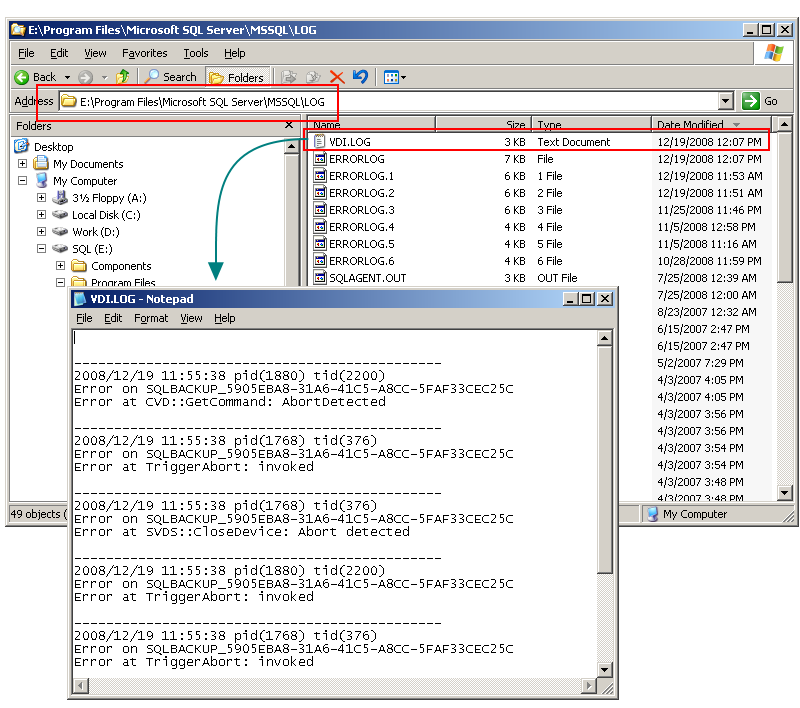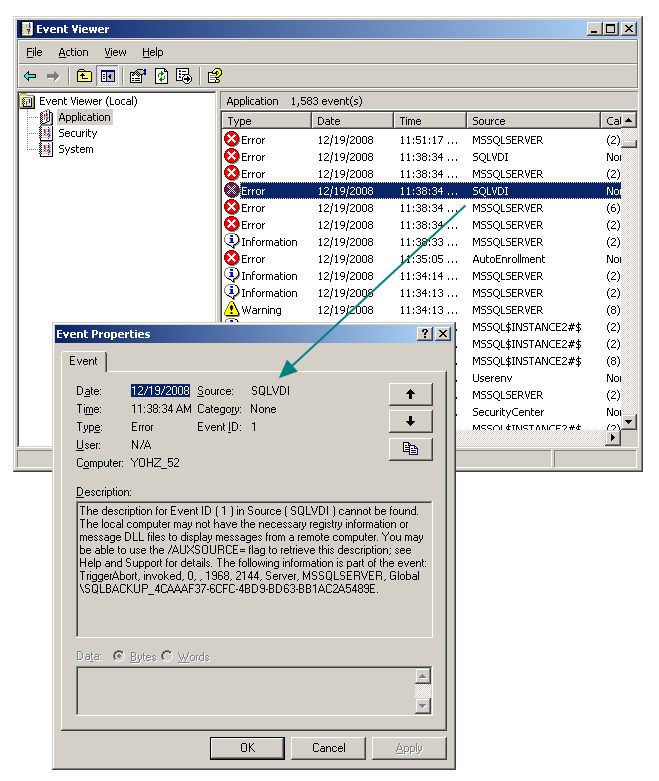
When you encounter errors with a backup application that uses
the SQL Server Virtual Device Interface (VDI), you can check the
logs generated by the VDI for more information.
Depending on the version of the VDI that's active on your
system, the logs are stored in different places. See this
document on how to
identify the VDI version that's registered on your system.
If your VDI version is that installed by SQL Server 2000, the
VDI will generate a log file named vdi.log in the SQL Server
instance's log folder, which contains further details of the
error.

If you are using the VDI library installed by SQL Server 2005 or
later, errors are logged in the Windows Event Viewer. The
Source component is identified as SQLVDI.

Your backup software may also report certain VDI error codes
during a failure. The following are the VDI error codes and
the corresponding textual description.
|
Error code
|
Description
|
|
0x80770002 (-2139684862)
|
The object was not open.
An example of this error happening is when the backup
application has closed its VDI connection, but SQL Server is only
now servicing the backup request sent by the backup application.
This may be because another process was blocking the backup,
and the backup application has aborted the backup process.
|
|
0x80770003 (-2139684861)
|
The api was waiting and the timeout interval had elapsed.
Similar to the above example, this can happen when the backup
application has waited a set amount of time waiting for SQL Server
to respond to its backup request, but did not receive any
response.
|
|
0x80770004 (-2139684860)
|
An abort request is preventing anything except termination
actions.
An example of this error is when the backup software has
encountered a critical error, and has issued an abort request to
the VDI.
|
|
0x80770005 (-2139684859)
|
Failed to create security environment.
|
|
0x80770006 (-2139684858)
|
An invalid parameter was supplied.
An example of this error is when the 32-bit and 64-bit versions
of the VDI library (sqlvdi.dll) is mismatched. See this
topic for further
details.
|
|
0x80770007 (-2139684857)
|
Failed to recognize the SQL Server instance name.
An example of this error is when the 32-bit and 64-bit versions
of the VDI library (sqlvdi.dll) is mismatched. See this
topic for further
details.
|
|
0x80770009 (-2139684855)
|
The requested configuration is invalid.
An example of this error is when the 32-bit and 64-bit versions
of the VDI library (sqlvdi.dll) is mismatched. See this
topic for further
details.
|
|
0x8077000a (-2139684854)
|
Out of memory.
|
|
0x8077000b (-2139684853)
|
Unexpected internal error.
|
|
0x8077000c (-2139684852)
|
Protocol error.
|
|
0x8077000d (-2139684851)
|
All devices are open.
|
|
0x8077000e (-2139684850)
|
The object is now closed.
|
|
0x8077000f (-2139684849)
|
The resource is busy.
|

Document history
| 12/19/2008 | Initial release. |




